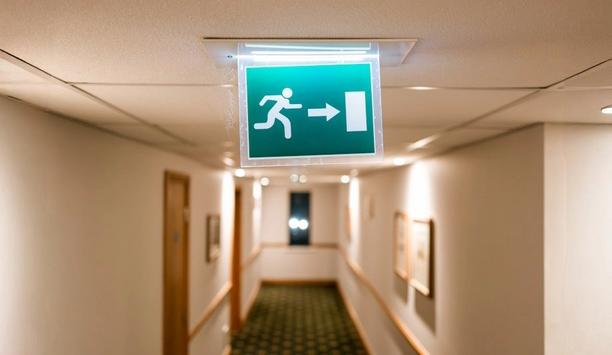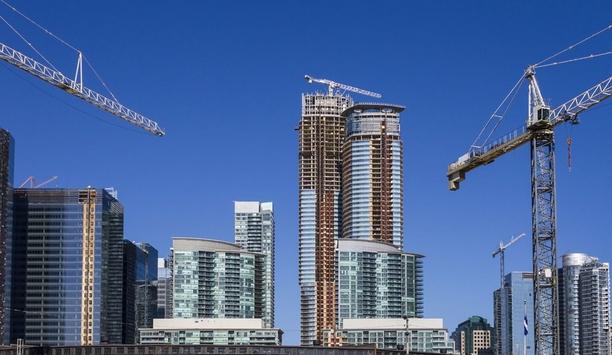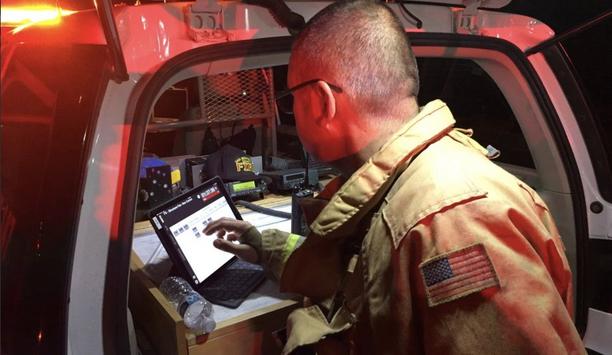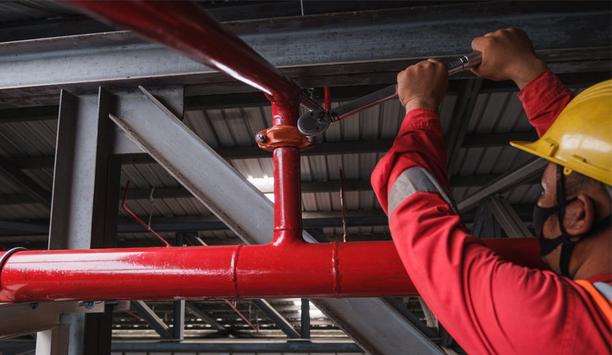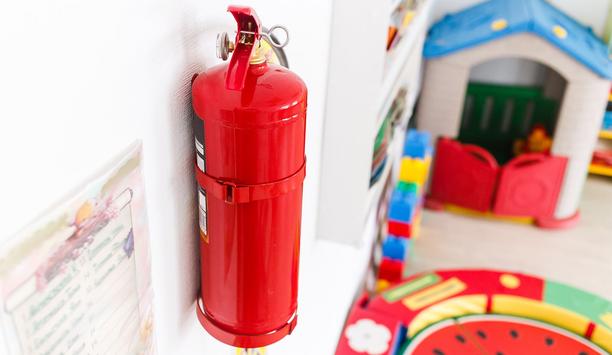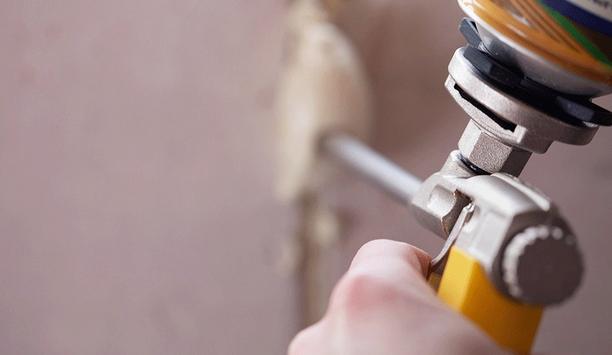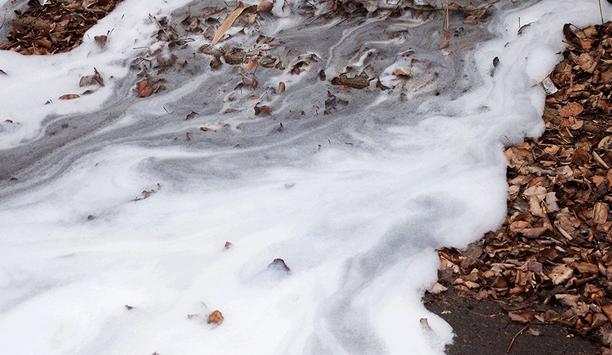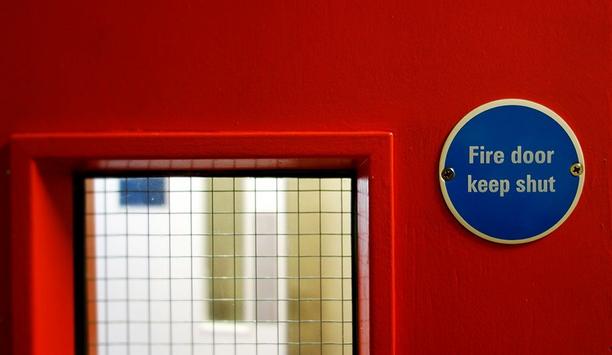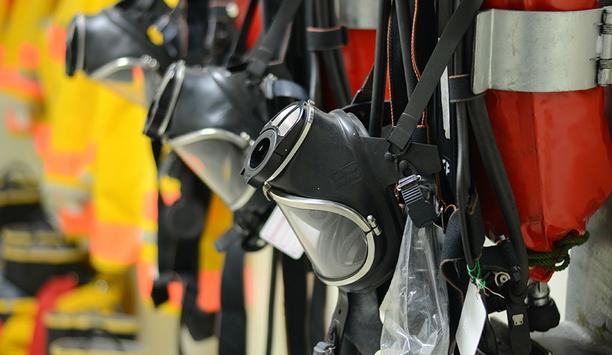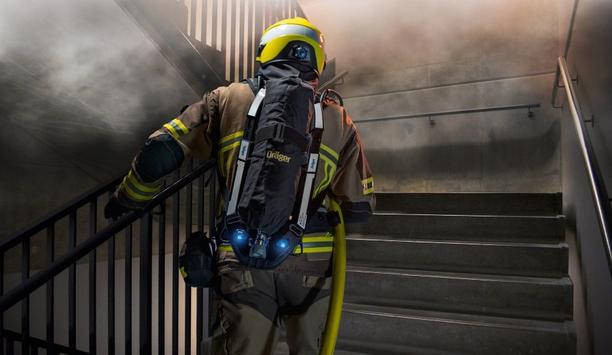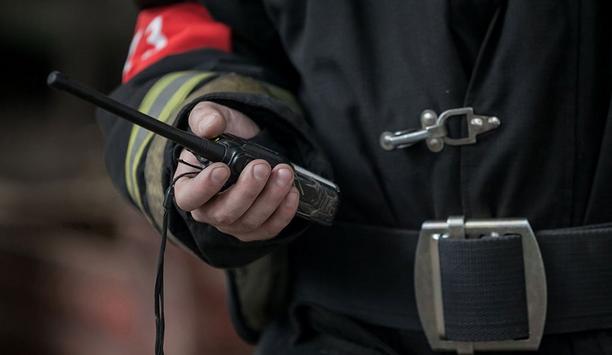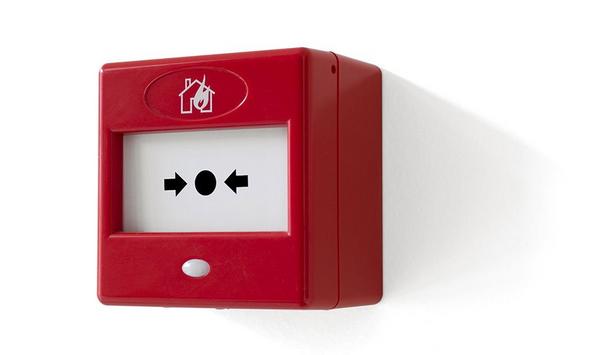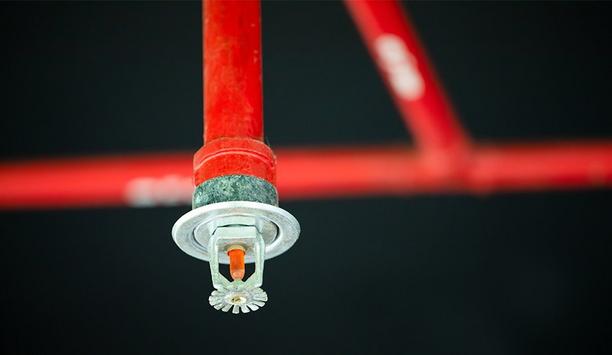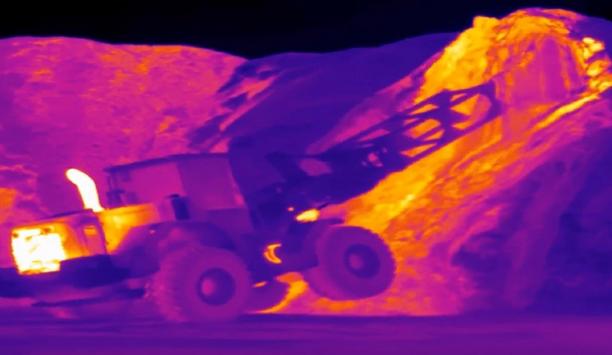Building Fire Safety - Expert Commentary
Are people too passive when it comes to fire door safety? Research conducted by the British Woodworking Federation (BWF) in 2022 would suggest so, with a third of the British public stating they would not report a problem with a fire door, despite three-quarters of respondents believing a propped open fire door would not perform its role in the event of a fire. From schools and shops to shared areas of employment and accommodation, people are habitually - and sometimes unknowingly - kept safe b...
Using technology to provide the information required under the new Building Safety Act 2022, which has been enforceable since October 1st, can help relieve the pressure on suppliers who are responsible for submitting the data, says Bob Glendenning, Fire Design Engineering Manager of Sherwin-Williams Protective & Marine Coatings. Building Safety Act The Building Safety Act is designed to take forward a fundamental reform of the building safety system and address the issues identi...
With new fire safety regulations around the corner and a renewed focus on responsible persons and coordination, Karen Trigg of Allegion UK discusses the significance of fire door hardware and why regular inspections and maintenance periods must remain high on the agenda. Fire doors and their hardware are often the first line of defense in the event of a fire. Working in tandem, they coexist as a core element of a building’s passive fire protection system, providing valuable protection and...
The construction sector has faced heightened scrutiny regarding its handling of fire safety in recent years. 2017’s devastating Grenfell Tower fire, served as a catalyst for reform on the testing of construction materials, building design, and construction practices, putting the focus back on occupant safety. In April this year, prominent fire service providers echoed this sentiment. They emphasized the importance of comprehensive system testing over solely examining individual comp...
The fire risks associated with multi-occupied residential buildings remain high on the sector’s agenda, and the latest wave of fire safety reforms can help address key concerns, says Karen Trigg of Allegion UK. raising fire safety standards In recent years, high-rise and high-risk building environments have been the subject of much industry focus. Where Grenfell was a catalyst for change, the incremental introduction of new reforms (such as the Fire Safety Act 2021 and Build...
As a company officer, the day will come where you and your crew are first to arrive at what looks like the beginning of a major incident. Your Battalion Chief (BC) is delayed or diverted to other incidents, so YOU are the Incident Commander (IC). How you set the table for this incident with regard to quickly setting up the Incident Command System (ICS) is critical. And how you use your channels of communication, including the ways you communicate, will be crucial to your success. Before we jump...
Electric wiring systems are mostly hidden and embedded in the construction, ceiling spaces, riser shafts, or wall cavities. Cables are installed in buildings by many different trades for different applications and often in polymeric conduit and ducting systems. What is not often realized is that the many miles of cables and many tons of plastic polymers which make up the wiring system can represent a major fixed fire load in a building. Fire Spread & Flame Retardance Most common flex...
The fifth anniversary of the Grenfell Tower disaster has passed, yet debate surrounding building safety best practice continues. Last year, the UK Government announced steps to further reform the building safety system with what it described as ‘the biggest changes in a generation’ to ensure the safety of residents in their homes. Within these new measures, mandatory sprinkler systems and consistent wayfinding signage were announced in all new high-rise blocks of flats over 11 meter...
There’s no doubt the Building Safety Act and Fire Safety Act are driving major improvements in the construction industry’s quality and approval processes. Although the initial focus of the legislation is on high-rise residential buildings, it’s predicted to be rolled out across the entire sector soon, tightening fire safety regulations in hospitals, hotels, and commercial offices and we await the rafts of secondary legislation that will really redefine the regulatory landscape....
When it comes to investments, fire suppression is the one we hope to never utilize. All too often it acts like a safety blanket, unseen yet always there, a hidden investment policy we hope never to have to cash in. With systems, we manage daily, such as heating, air conditioning, and lighting, a fault is often noticeable and easy to identify. But how do you quickly ascertain an issue with fire safety infrastructure? RRO Regulatory Reform (Fire Safety) Order 2005 The introduction of the RRO Reg...
Recent years have seen fire risks and resulting insurance claims in commercial premises grow significantly. This increase has been influenced by various factors, such as unusually hot and dry weather, increasingly demanding work schedules with prolonged hours, and an ongoing drive for sustainability in the UK. James Mountain, sales and marketing director, Fire Shield Systems, examines the factors influencing risk and the role of insurers in strengthening policies surrounding fire protection, to...
Last year was the largest wildfire season recorded in California in modern history, with six of the top 20 largest wildfires in the state, according to the California Department of Forestry & Fire Protection (CAL FIRE). In 2020, firefighters faced a total of 9,917 wildfires that consumed a record 6,653 square miles. These fires took the lives of 33 people and damaged or destroyed 10,488 structures. Ahead of the 2022 wildland fire season, climatologists are predicting another record-shatteri...
When public safety agencies, including police, fire, and ambulance, work together to meet the needs of a region, citizens are better protected, and a better quality of life for all is promoted. However, today’s public expectation demands agencies embrace digital transformation, for those partnerships to be effective and efficient and vitally, connected with the public they serve. This can involve the integration of operational systems, such as computer-aided dispatch (CAD) in a public saf...
Workplace emergencies come in all shapes and sizes, including fires, explosions, floods, hurricanes, tornadoes, toxic material releases, radiological and biological accidents, civil disturbances, workplace violence, etc. All of which, according to the Occupational Safety & Health Administration (OSHA), require an emergency action plan. Willfully violating that requirement and not having an emergency action plan that is current, well understood and accessible, could result in a fine of US$ 1...
Losing any building to a fire is always a tragedy - but when there is a wealth of history or significance also at stake, the loss is irreplaceable. John Harrison, Sales and Marketing Director at Ramtech, discusses the fire protection challenges associated with heritage projects and how they can be safeguarded from the risk of fire thanks to innovative wireless fire safety technology. The world watched in great sadness and shock as flames engulfed Paris’ Notre Dame - one of the most famous...
The UK Fire Service is called out to extinguish fires in approximately 1,500 UK schools per year. Regardless of their size, these incidents disrupt the education of around 90,000 students each year, not to mention the economic strain caused by building damages. But most significant of all, these fires compromise safety. The government recently opened a consultation on proposed revisions to its non-statutory fire safety guidance in schools. Building Bulletin 100 The Building Bulletin 100 (BB10...
Working in the electrical world, it’s sometimes necessary to create a penetration or hole in a fire wall, in order to install cabling for services. Something we often see is that these holes aren’t sealed correctly after installation, in order to ensure the fire wall retains its fire integrity. Fire rated foam, often simply referred to as pink foam, is a common tool in a fire safety specialist or electrician’s toolbox, but this isn’t always the product to reach, for when...
There is a lot of studies and authority actions to have better responses after a natural disaster, including risk management, awareness, and preparedness especially in areas where there is a higher probability or risk of a disaster occurring. Lack of risk management policies There are countries around the world with strong policies and high investment in risk management, nevertheless, fire protection of buildings, critical infrastructure, industrial sites, and key parts of the supply chain of...
A 2015 survey found that globally firefighters are the most trusted profession worldwide. The fire service provides a vital role during flood events, rescuing members of the public, who may be trapped in their homes, pumping out flooded properties, and recovering stranded vehicles. However, many would not require this assistance, if they had been better prepared prior to a flood. And such preparation could help free up emergency services resources for others. Extreme rainfall and flooding Mor...
“Luckily, today fire safety is a topic not only experts and constructors, but also the end-consumer is interested in,” said Marc Husband, Purchasing Director at Leader Doors, one of the UK’s renowned door manufacturers and retailers. Over the last few years, there have been many changes in building regulations for flats, apartments and offices for fire safety. Any building with more than three floors needs to be equipped with FD30 rated 30-Minute-Fire-Doors, to ensure that in t...
Fires have devastating consequences, not just posing a threat to property, but also to human life. Fires can also have detrimental impacts on the environment, with one of the largest associated environmental issues being water runoff occurring from tackling the fire. What is Fire Water Runoff? - Water is widely used to extinguish fire, thanks to its accessibility and effectiveness. Typically, water isn’t hazardous and doesn’t pose any threats, however, it can easily become contamin...
Fire safety doesn’t happen by accident; it requires universal attention. With that, Karen Trigg of Allegion UK explores why the importance of working fire doors is often overlooked and why now is an opportune time to bridge the gap between fire safety education and action. Improving fire safety within UK buildings is a challenge we are all continuously facing. Irrelevant of the sector, it’s of the highest importance for any building type - from schools and hospitals to high-rise res...
It is the legal duty of the responsible person in any building to make the evacuation of disabled people equal to that for able-bodied people, as Anthony Smith, Managing Director of Vox Ignis, explains. When the Disability Discrimination Act (DDA) was first introduced in 1995, it gave disabled people long overdue access to goods and services, education, employment, transport and accommodation. This was, subsequently, incorporated into the Equality Act in 2010. Evacuation of mobility impaired pe...
Fire conditions and extrication events that firefighters arrive at today are very different from the conditions faced years ago. According to research at Underwriter Laboratories (UL), modern homes contain larger quantities of petroleum-based products and plastics that burn faster and hotter versus traditional and more natural materials. Rapid fire spread The result is more rapid and hotter fire growth with exponential increases in heat generation, smoke production and toxicity. Faster flashov...
The product lifecycle of self-contained breathing apparatus (SCBA) is approximately ten years, during which time technology inevitably advances considerably in terms of digitization and ergonomics. Increasingly pertinent in the last decade, and especially since the Pandemic, has also been how kit can be designed for ease of cleaning to ensure firefighters are protected from harmful carcinogens as well as bacterial and viral infections. When we surveyed UK firefighters as part of our ‘Hea...
To manage fire risks, there needs to be a shift away from detecting and responding to emergencies and instead, a look towards connected technologies to provide a pre-emptive, proactive approach. Fires can be highly devastating, putting people at risk and threatening the lives of the public in surrounding areas – not to mention how destructive they can be in terms of damage to materials and property. A connected approach Fortunately, right now, our world is more connected than ever befor...
As the demand for UK housing continues to rise, developers and planning authorities are under increasing pressure to deliver the intended UK Government target of 300,000 new homes per year, by the mid-2020s. The need to build as quickly and as cost effectively as possible, unfortunately often leaves little time to invest in developing a thorough understanding of notoriously Byzantine fire safety standards, increasing the risk of serious, potentially fatal, mistakes. firm understanding of fire...
After years of Brexit negotiations and an ongoing climate of prevailing uncertainty, businesses across the UK are still adjusting to the realities of life outside the European Union. Following the end of the UK’s transition period with the European Union, at the end of last year, the United Kingdom is no longer subject to European laws. However, for many companies, the last-minute nature of the Brexit negotiations mean that they remain unclear on what has actually changed in practical te...
The fire sprinkler system in your building is a critical safety measure and, when needed, it can save lives. Still, even the best systems can malfunction, and sprinklers do occasionally fail. When they do, they can drench the interior of your building, damaging everything from furniture and personal belongings to drywall and building materials. As a property manager, dealing with fire sprinkler failure can feel overwhelming. What do you do next? Where do you start? And why did the sprinkler sy...
Waste management sites are particularly vulnerable to fires, with hundreds reported every year, just in the UK. The materials stored in a waste heap make them particularly risky environments. ‘Hot spot’ fires, as they’re called, can be caused by chemical waste, flammable items, or the heat caused by the natural breakdown of organic materials. A blaze can start quickly and without warning, building into a major issue that can threaten lives and livelihoods. And not only...
The New Future For Fire Agencies
DownloadThe Eight Key Trends in Fire Detection in 2023
DownloadA Digital Platform to Improve Fire Safety Compliance and Inspections
DownloadOvercoming the Challenges of Fire Safety in the Paper Industry
DownloadCarbon Monoxide: Creeping Killer Caught In The Act
Download